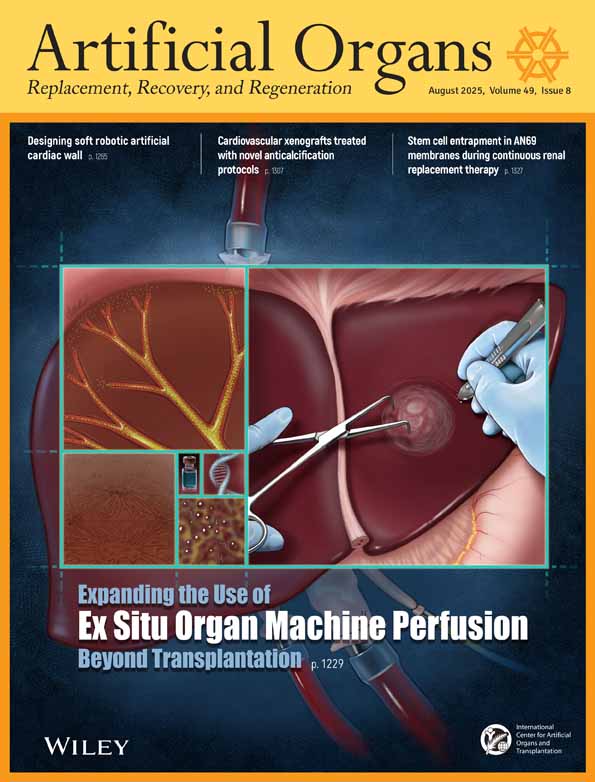The Effects of Pulsatile Versus Nonpulsatile Perfusion on Blood Viscoelasticity Before and After Deep Hypothermic Circulatory Arrest in a Neonatal Piglet Model
Presented in part at the 6th Congress of the International Society for Rotary Blood Pumps, July 25–27, 1998, in Park City, Utah, U.S.A.
Abstract
Blood trauma increases blood viscoelasticity by increasing red cell aggregation and plasma viscosity and by decreasing cell deformability. During extracorporeal circulation, the mode of perfusion (pulsatile or nonpulsatile) may have a significant impact on blood trauma. In this study, a hydraulically driven dual chamber pulsatile pump system was compared to a standard nonpulsatile roller pump in terms of changes in the blood viscosity and elasticity during cardiopulmonary bypass (CPB) and pre and post deep hypothermic circulatory arrest (DHCA). Piglets, with an average weight of 3 kg, were used in the pulsatile (n = 5) or nonpulsatile group (n = 5). All animals were subjected to 25 min of hypothermia, 60 min of DHCA, 10 min of cold reperfusion, and 40 min of rewarming with a pump flow of 150 ml/kg/min. A pump rate of 150 bpm, pump ejection time of 120 ms, and stroke volume of 1 ml/kg were used during pulsatile CPB. Arterial blood samples were taken pre-CPB (36°C), during normothermic CPB (35°C), during hypothermic CPB (25°C), pre-DHCA (18°C), post-DHCA (19°C), post-rewarming (35°C), and post-CPB (36°C). Viscosity and elasticity were measured at 2 Hz and 22°C and at strains of 0.2, 1, and 5 using the Vilastic-3 Viscoelasticity Analyzer. Results suggest that the dual chamber neonate-infant pulsatile pump system produces less blood trauma than the standard nonpulsatile roller pump as indicated by lower values of both viscosity and elasticity during CPB support.




